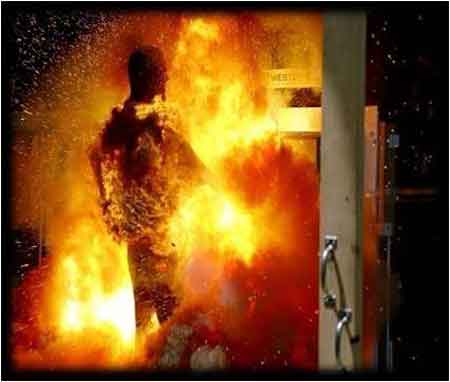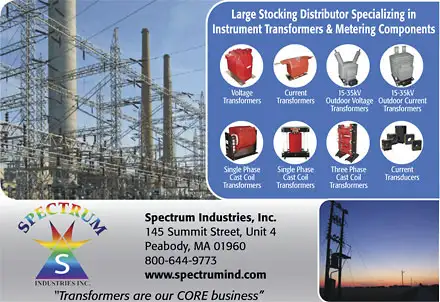What Are The Four Main Types of Electrical Injuries?
By R.W. Hurst, Editor

NFPA 70e Training - Arc Flash
Our customized live online or in‑person group training can be delivered to your staff at your location.

- Live Online
- 6 hours Instructor-led
- Group Training Available
Download Our OSHA 3873 Fact Sheet – Minimum Approach Distance and Training Requirements

- Calculate MAD using voltage and overvoltage values
- Ensure proper communication between host and contract employers
- Meet OSHA training requirements for qualified electrical workers
What are the four main types of electrical injuries? Electric shock, burns (thermal/arc flash), electrocution, and secondary trauma from falls due to muscle tetany; driven by current, voltage, fault paths, and inadequate PPE or grounding.
What Are the Four Main Types of Electrical Injuries?
What Are the Four Main Types of Electrical Injuries? Understanding these injury types is crucial for workplace safety and effective prevention strategies.
- Electrocution: This fatal injury occurs when a person is exposed to a lethal amount of electrical energy, leading to death.
- Electric Shock: This injury happens when an electrical current passes through the body, potentially causing muscle contractions, nerve damage, or cardiac arrest.
- Burns: Electrical burns result from the heat generated by the flow of electric current through tissues, causing damage that can range from superficial to deep tissue injuries.
- Falls: Indirect injuries such as falls can occur when a person loses balance or muscle control due to an electric shock, leading to secondary injuries like fractures or sprains.
Recognizing these four main types of electrical injuries is essential for implementing appropriate safety measures and ensuring a safer working environment. For a concise overview of risk statistics and best practices, consult this electrical safety facts resource for additional context.
Visit Our NFPA 70E Training Course
Visit Our Our CSA Z462 Training Course
Let's explore the four main types of electrical trauma: electric shock injury, electrical burns, arc flash, and contact with the electric source injuries, addressing their specific aspects and management. Electrical injuries include :
Electric Shock Injury
An electric shock injury occurs when a person becomes part of an electrical circuit, either when touching exposed electrical sources or when exposed electrical wiring contacts water. The severity of the shock depends on the current's path through the human body, the current's strength, and whether it is AC (Alternating Current) or DC (Direct Current). AC is more dangerous because it can cause rhythmic muscle contractions, often preventing the victim from breaking free from the electrical source. In contrast, DC might cause a single, strong muscle contraction, throwing the victim away from the source.
Electricity Today T&D Magazine Subscribe for FREE

- Timely insights from industry experts
- Practical solutions T&D engineers
- Free access to every issue
Immediate effects can range from mild tingling to cardiac arrest, while long-term consequences include neurological damages and emotional trauma. Treatment involves disconnecting the electricity, administering CPR if needed, and medical evaluation for potential internal damages.
Electrical Burns
Electrical burns are injuries caused by heat generated from the flow of electric current through the body. Unlike external burns, electrical burns can cause much deeper tissue damage and are not always visible on the skin. These burns are common in incidents involving high voltages and power line accidents. Because severe burns frequently arise during arc-flash events, our guide to arc flash injuries outlines typical burn patterns and immediate first-aid priorities.
The immediate treatment for electrical burns involves cooling the burn and covering it with a sterile bandage, avoiding any application that might worsen the damage. Long-term care might require surgery and rehabilitation to manage scars and restore function.
Arc Flash
An arc flash is a type of electrical explosion resulting from a rapid release of energy due to an arcing fault between two phase bus bars, a phase bus bar and a neutral, or a phase bus bar and a ground. The temperature of an arc flash can reach as high as 35,000 degrees Fahrenheit, which can vaporize metal and severely burn human skin. For foundational concepts and terminology, see our electrical arc flash primer to better understand fault conditions.
Preventive measures include maintaining a safe distance from live components, regular electrical safety audits, and wearing appropriate personal protective equipment (PPE). Treatment for arc flash injuries involves managing burns, heart complications, and hearing loss due to the blast. To inform PPE selection and emergency planning, review what injuries are associated with arc flash for real-world scenarios.
When responding to an incident, consult this arc flash victim action guide to align first-aid steps with established protocols.
Contact with the Electrical Source
Injuries from contact with the electrical source occur when a person directly contacts an energized part, such as wiring or machinery. The injury's extent depends on the contact duration and the current's strength. Direct contact injuries can result in anything from minor skin burns to serious internal injuries and cardiac arrest.
The treatment protocol involves eliminating the power source immediately and addressing the injuries based on their severity, often requiring cardiac monitoring and intensive care for severe cases.
Safety Measures
Preventing these injuries involves stringent electrical safety practices. This includes ensuring all electrical wiring and components are up to code, using circuit breakers and ground-fault circuit interrupters, and adhering to safety protocols during electrical system maintenance. Training and proper use of PPE can significantly mitigate the risk of electrical burns and arc flash injuries. Organizations can strengthen programs by integrating electrical health and safety principles into training, audits, and incident reporting.
Diagnosis and Treatment
Diagnosing electrical injuries typically involves a thorough medical evaluation, including ECGs, imaging tests, and blood work to assess muscle and tissue damage. Treatment might include medication for pain and inflammation, surgical interventions for burns, and long-term rehabilitation. Clinicians evaluating blast-type lesions may reference this overview of electric flash mechanisms to anticipate hidden complications.
Electrical injuries, while potentially severe, can be prevented with proper safety precautions and awareness. By understanding the specifics of electric shock injury, electrical burns, arc flash, and contact with the electrical source, individuals and professionals can minimize risks and ensure a safer working environment. Whether at home or in industrial settings, respecting electricity and following established safety guidelines can be life-saving.
FREE EF Electrical Training Catalog
Download our FREE Electrical Training Catalog and explore a full range of expert-led electrical training courses.

- Live online and in-person courses available
- Real-time instruction with Q&A from industry experts
- Flexible scheduling for your convenience







